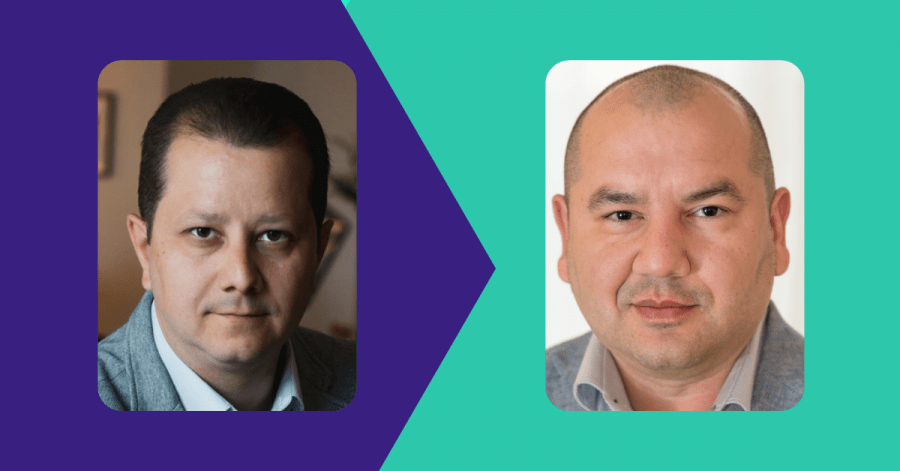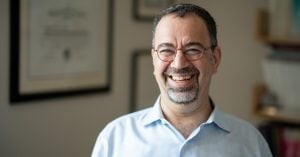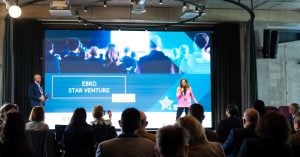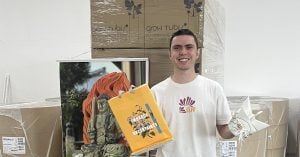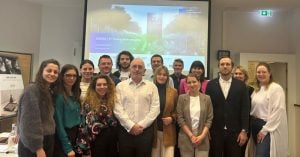KFactory, a digital SaaS automation platform for manufacturing companies, has just announced they will be launching the Green Virtual Engineer in autumn. The tool will enable factories to monitor carbon footprint sources and receive AI-based best practice recommendations to reduce carbon emissions.
The product is launched in alignment with the company’s mission to optimize operational processes. It also follows increased regulatory pressure from the EU on manufacturing companies to meet new emissions standards. KFactory has already received €215K in 2020 to develop its business model and product, in a round led by Sparking Capital and joined by equity crowdfunding platform SeedBlink and private angels.
What is the global context for manufacturing
As the newest report by the Intergovernmental Panel on Climate Change indicates, human influence on the environment and the climate change effects we see at a global scale is undisputed. The speed to which these effects intensify is also dire.
In this context, governments are responding with new regulatory packages. At the European Union level, the “Fit for 55” program proposes a set of actions to reduce the carbon footprint of countries by 55% by 2030. And in 2020, the European Commission also proposed a new Industry Strategy to support the transition to a green and digital economy.
For businesses, new regulations include obligations to reduce carbon emissions from operations, as well as taxation of products based on the emissions resulting in the manufacturing processes. And since the industry accounts for around 23% of greenhouse gas (GHG) emissions, at least in highly industrialized economies such as the US, one of the consequences is a greater responsibility for manufacturing companies in monitoring and reducing carbon emissions.
How does the Green Virtual Engineer help reduce carbon emissions
“The implementation of regulations will be both complex and time consuming”, says Adrian Dima, Product Leader and Co-founder of KFactory. “At macro level, the EU will provide financial support for companies to adopt efficient measures. KFactory has proven already a fast ROI and due to its SaaS model – customers of all sizes and from all sub-sectors can adopt the platform without the usual pain generated by classic IT adoption process”, he adds.
In a nutshell, KFactory’s digital SaaS automation platform aims to innovate, automate, and optimize operational processes in the manufacturing industry. To do so, its digital products analyse and help improve the flow and impact of resources in the factory. The company has a track in the market, being the first startup Industry 4.0 financed in Romania and having grown 500% this year.
The most recent innovation comes from its Team of Virtual Engineers – a product, dedicated to tracking and optimizing the operational processes in production, maintenance, supply chain and quality. The Green Virtual Engineer will be responsible for monitoring carbon sources and making recommendations on reducing emissions at the factory level once historical data is available.
“After having data, we provide outputs related to activities trends and patterns, knowing their cost in carbon footprint. It is close to what we are providing with KFactory, as context analysis in different scenarios in production, manufacturing, supply chain and quality,” Adrian Dima tells The Recursive.
While the idea is not new, IT solutions that calculate carbon emissions make theoretical and general assumptions that result in a high degree of error.
“The novelty of the KFactory platform is that we are in the middle of a class of large sources of carbon emissions: factories. We are directly connected to the internal systems and we understand dynamically how the processes in each factory are responsible for emissions,” Adrian Dima explains.
Another way in which manufacturers can benefit from such a platform is the in-built automation and precision. Human intervention is minimal to non-existent, because the overall KFactory platform can automatically retrieve data from multiple and heterogeneous sources.
Currently, KFactory is present in Romania, as well as the DACH area, US, and Portugal. After the exponential growth of 2021, KFactory is planning a new investment round towards the end of the year. The funds will be dedicated to increasing its international presence in the DACH and US markets, as well as to accelerate the development of the software platform.

